Restringing a piano is a complex process that involves replacing the strings that have worn out or become damaged over time. As a piano owner, it is essential to know the cost of restringing your instrument to ensure it remains in good condition and continues to produce high-quality sound.
However, the cost of restringing a piano can vary depending on various factors, such as the type and size of the piano, the quality of the strings used, and the technician’s fees. Here, we’ll delve into the factors that affect the cost of restringing a piano and offer valuable insights for piano owners on the expected expenses for this service.
Understanding the Expenses Involved in Restringing a Piano
Restringing a piano is a significant investment for piano owners that can cost several hundred to several thousand dollars. It is essential to understand the expenses involved to ensure you are getting the best value for your money.
The cost of restringing a piano can vary depending on several factors, such as the size of the piano, the type of strings used, the technician’s fees, and the geographic location. By exploring these factors, piano owners can gain a better understanding of the cost involved in restringing their instruments and make informed decisions.
On average, restringing an upright piano can cost anywhere from $2,000 to $4,000. In contrast, grand pianos have more strings and are more complex to restring, resulting in a higher cost. The cost of restringing a baby grand or grand piano can range from $4,000 to $10,000.
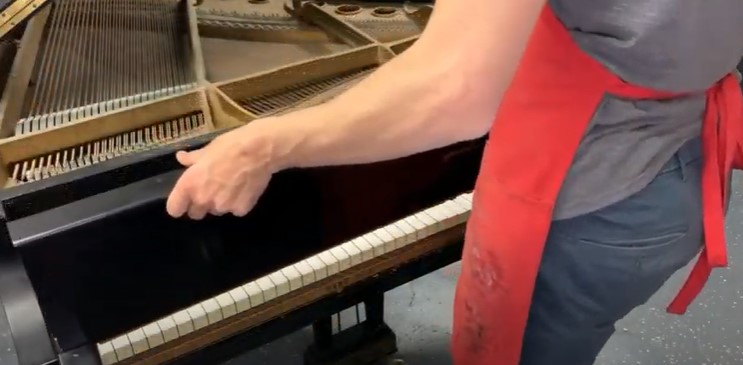
It’s essential to keep in mind that these figures are only estimates, and the actual cost can vary depending on other factors, such as the quality of the strings used and the technician’s fees.
Understanding the Process of Restringing a Piano
Restringing a piano involves replacing the worn-out or damaged strings on the instrument, to achieve optimal sound quality. It is a complex process that requires expertise, precision, and attention to detail. Restringing a piano can significantly enhance its sound quality and extend its lifespan, making it an essential maintenance procedure for piano owners.
Importance of Restringing Your Piano
To maintain optimal sound quality and prolong the lifespan of a piano, restringing is necessary when the strings lose their elasticity, and become worn out or damaged. Therefore, it is important for piano owners to recognize the signs that their instrument requires restringing and take appropriate action to preserve their piano’s sound quality.
Factors That Affect the Cost of Restringing a Piano
When restringing a piano, the cost of materials is relatively low compared to labor costs. Piano strings are typically inexpensive, with a cost of around $2 per string or $250 to $400 for a full set.
However, the cost may vary depending on the quality of the strings used. Tuning pins are another essential component in restringing, with a set of 12 pins costing about $18.
The total material cost may also depend on the size of the piano and the number of tuning pins that need replacement. The bulk of the cost of restringing a piano lies in the labor cost, which can be influenced by several factors, as discussed earlier.
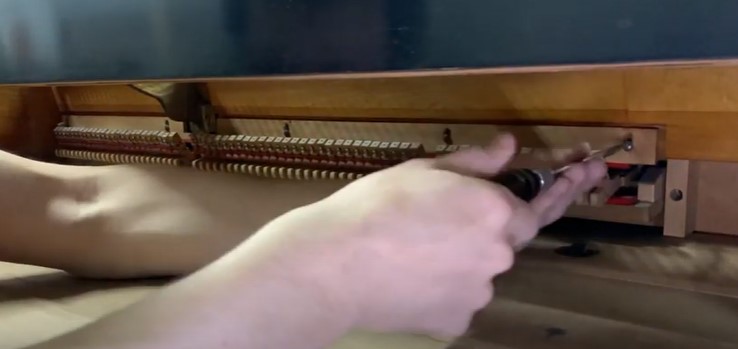
Non-material costs have a significant impact on the total cost of restringing a piano. These costs include several factors such as:
- The experience level of the technician performing the restringing is a crucial factor that affects the total cost of the service.
- The prevailing rates for piano restringing services in your area can also impact the cost of the service.
- The type of piano being restringed is another critical factor that determines the cost involved in the restringing process.
- The number of strings being replaced, whether it is a full set or a partial replacement, can also affect the total cost of restringing a piano.
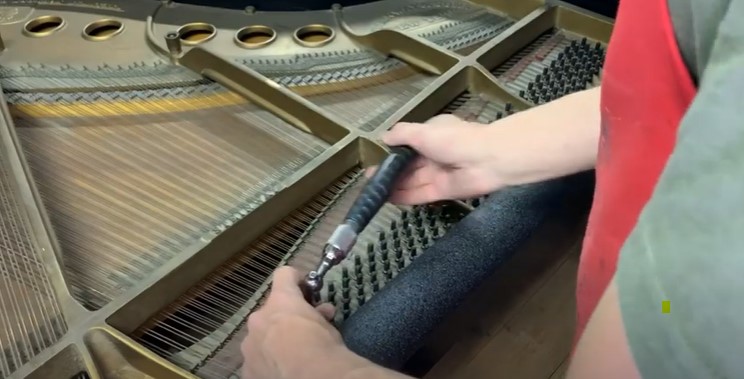
Steps Involved in Restringing a Piano
Restringing a piano is a complicated process that involves several essential steps.
Preparing the Piano for Restringing
- The piano is placed on a specialized dolly to ensure easy movement and prevent damage.
- The technician removes the old strings by loosening the tension of the string with a tuning hammer and carefully unwinding them from the pins.
- The technician checks the piano’s soundboard and bridges for any signs of wear and tear or damage.
- The technician also inspects the tuning pins and replaces any that are damaged or corroded.
- Finally, the technician cleans the soundboard and bridges to remove any debris.
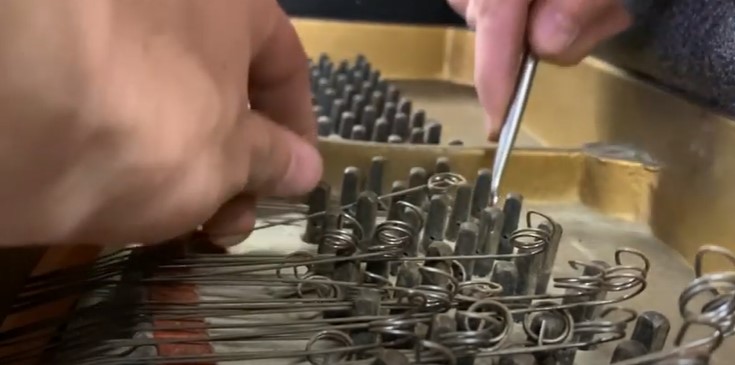
Adding New Strings to the Piano
- The technician selects the appropriate type, gauge, and quality of strings based on the piano’s type, size, and desired sound quality.
- The technician installs the new strings by attaching them to the tuning pins and passing them over the bridges and down to the hitch pins.
- The technician adjusts the tension of each string to ensure that it produces the correct pitch and sound quality.
- For grand pianos, the technician installs the bass strings by passing them through the hitch pins and securing them to the plate.
Final Tuning and Testing of the Piano
- The technician tunes the piano by adjusting the tension of each string to ensure that it produces the correct pitch.
- The technician checks the piano’s overall sound quality and makes any necessary adjustments to achieve the desired tone and volume.
- Finally, the technician tests the piano to ensure that it is functioning correctly and producing high-quality sound.
Additional Considerations for Piano Restringing
To ensure optimal sound quality and extended lifespan of a piano, several additional aspects should be considered during restringing. These aspects include plate refinishing, soundboard repair, bridge replacement, pin block replacement, and damper replacement. These additional considerations are essential for maintaining a piano’s sound quality and ensuring its longevity.
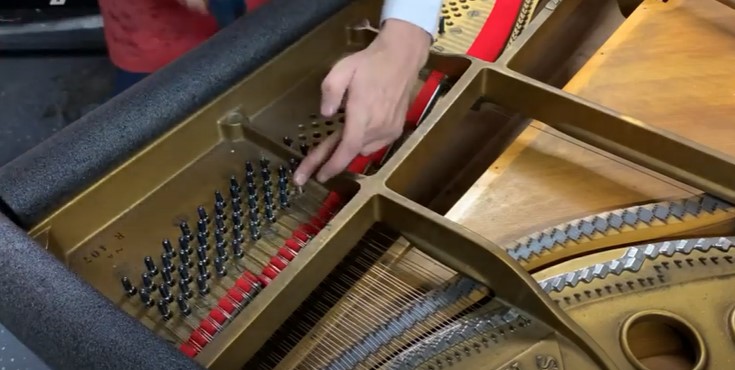
Process Involved in Restringing a Piano
- Damper Removal
- New Damper Installation
- Recording the string scale
- Tuning Pin Extraction
- String Removal
- New String Installation
- Bass string Duplication
Frequency of Piano Restringing
The frequency of restringing a piano depends on several factors, such as the piano’s age, usage, and environmental conditions. In general, pianos should be restrung every 20 to 25 years for optimal sound quality. However, some factors may necessitate restringing sooner, such as regular use in a humid or dusty environment, which can cause the strings to deteriorate faster.
Affordable Piano Repairs
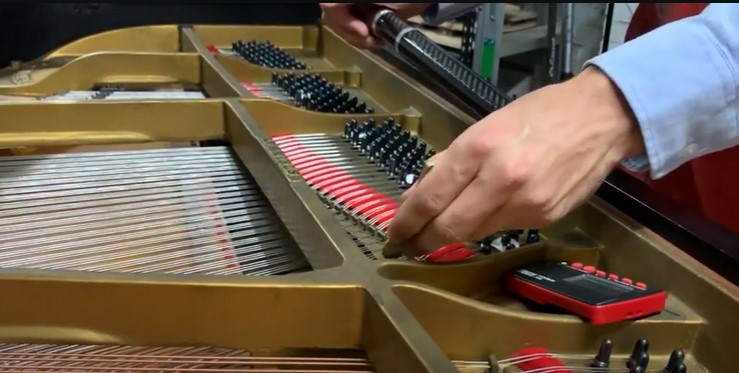
Regular tuning, regulating, and voicing are affordable repair options that can significantly enhance a piano’s sound quality. Tuning costs between $100 to $200, and regulating and voicing both cost around $500.
Conclusion
Restringing a piano can be beneficial for those who wish to preserve or improve their piano’s sound quality and extend its longevity. While the cost can vary depending on several factors, including the type of piano and the quality of materials used, it is generally a worthwhile investment who want to ensure that their instrument produces high-quality sound for many years to come.
Regular restringing, along with other maintenance procedures, can also help prevent the need for costly repairs in the future. Additionally, a well-maintained piano can retain its value over time and even increase in value, making it a good investment for those who plan to sell their instrument in the future.

